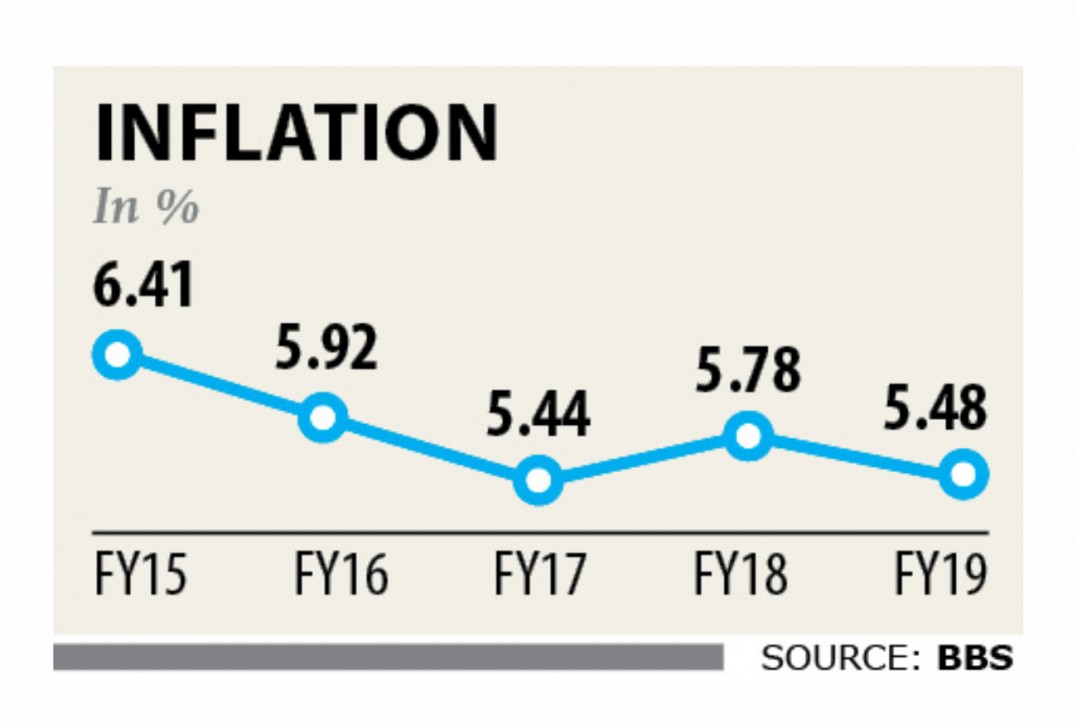Annual inflation remains within target

The government has been able to keep inflation within the limit it had set a year back for the just-concluded fiscal year, largely on the back of higher rice production.
Inflation stood at 5.48 percent in fiscal 2018-19, comfortably below the target of 5.6 percent for the fiscal year.
Planning Minister MA Mannan, while releasing the data at a press conference in his office in the city, attributed the achievement to a decline in prices for the higher production of crops such as paddy in comparison to demand this year.
Inflation fell to 5.52 percent in June, the lowest in four months, riding on a decline in both food and non-food prices, according to the Bangladesh Bureau of Statistics.
It was down from 5.63 percent in May this year and 5.54 percent in June last year.
Food inflation fell nine basis points from 5.49 percent in May to 5.40 percent in June while non-food inflation dropped to 5.71 percent last month, down 13 basis points from 5.84 percent a month ago.
June’s inflation figure is an about-face from that of May when it hit a 13-month high owing to a sharp increase in prices of non-food items marking Ramadan, which typically sees a spike in consumption.
Zahid Hussain, former lead economist of World Bank Bangladesh, said the good news was that headline inflation has remained stable in fiscal 2018-19 and below the 5.6 percent target in the government’s medium-term macroeconomic framework.
“Decline in the food inflation counteracted the rise in the non-food inflation. However, rural inflation increased, while inflation declined in urban areas indicating gradual convergence of prices between urban and rural areas.”
He said the rise in non-food inflation in both rural and urban areas appears to have resulted from demand pull effects caused by strong income growth and fiscal expansion.
“Continued policy vigilance will be needed to manage the cost-push pressures arising from the new VAT law implementation and gas price increase.”
In June, general inflation in rural areas was 5.38 percent, down from 5.44 percent in May. In urban areas, inflation fell 18 basis points to 5.78 percent in June.
Inflation has been on a downward trajectory since fiscal 2013-14. Starting with 7.35 percent, it fell to 5.44 percent in fiscal 2016-17 but slightly increased to 5.78 percent the following year.
Satisfactory domestic production, favourable environment, low budget deficit and prudent monetary policy coupled with low fuel and commodity
prices in the international markets contributed to the slide in overall inflation, according to government documents.
The government has targeted a 5.5 percent inflation rate in the current fiscal year.
